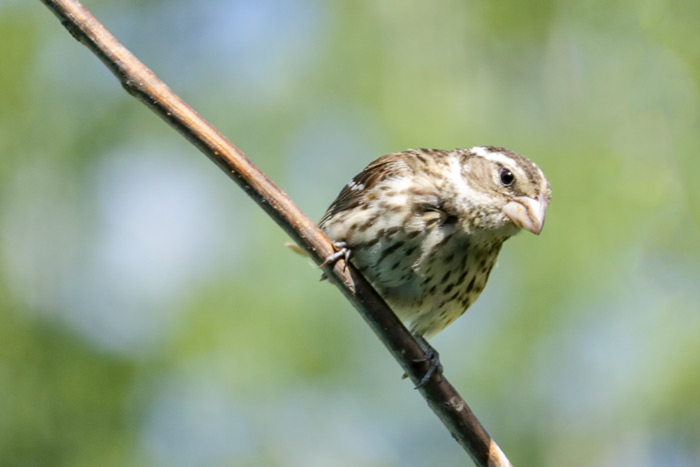It often forages in thick foliage near the treetops and can be best located by song or call note.
Ruby breasted grosbeak call.
However its song rich whistled phrases like an improved version of the american robin s voice is heard frequently in spring and summer.
The female sings when nest building incubating and brooding.
You can imagine my delight at capturing this video portrait of a singing male rose breasted grosbeak.
Most people describe the grosbeak s song as sweeter and more melodious than a robin s.
The song can last 6 seconds and consist of 20 notes or syllables.
What s more he s a very pretty specimen.
Bursting with black white and rose red male rose breasted grosbeaks are like an exclamation mark at your bird feeder or in your binoculars.
They sound like american robins but listen for an extra.
Rose breasted grosbeaks eat insects seeds and fruits.
Rose breasted grosbeaks are one of few bird species reported to sing while sitting on the nest.
Look for these birds in forest edges and woodlands.
The rose breasted grosbeak prefers young open deciduous woods during spring and summer.
They also give harsh repeated squawks when alarmed.
The striking rose breasted grosbeak is a common bird of wooded habitats across much of eastern and midwestern north america.
Rose breasted grosbeaks give short sharp penetrating chink calls sometimes compared to the sound of a sneaker on a gym floor.
Male red breasted grosbeaks will sing in order to defend nesting territory.
Males and females exhibit marked sexual dimorphism.
Where the range of this species overlaps with that of the black headed grosbeak on the great plains the two sometimes interbreed.
The rose breasted grosbeak pheucticus ludovicianus is a large seed eating grosbeak in the cardinal family cardinalidae it is primarily a foliage gleaner.
Females and immatures are streaked brown and white with a bold face pattern and enormous bill.
In leafy woodlands of the east the rose breasted grosbeak often stays out of sight among the treetops.
Singing from the canopy of a deciduous forest even a brightly colored.
Males have black heads wings backs and tails and a bright rose colored patch on their white breast.

